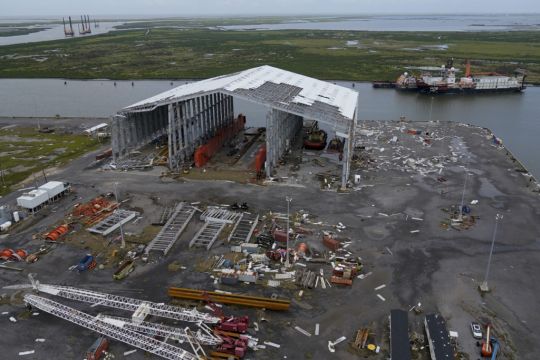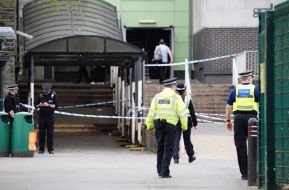Hundreds of thousands of Louisianans sweltered in the aftermath of Hurricane Ida with no electricity, no tap water, precious little petrol and no clear idea of when things might improve.
Long lines that wrapped around the block formed at the few petrol stations that had fuel and generator power to pump it. People cleared rotting food out of refrigerators. Neighbours shared generators and borrowed buckets of swimming pool water to bathe or to flush toilets.
Governor John Bel Edwards said: “We have a lot of work ahead of us and no one is under the illusion that this is going to be a short process.”
New Orleans officials announced seven places around the city where people could get a meal and sit in air conditioning.

The city was also using 70 transit buses as cooling sites and will have drive-thru food, water and ice distribution locations set up on Wednesday, mayor LaToya Cantrell said.
Ms Cantrell also ordered a nighttime curfew on Tuesday, calling it an effort to prevent crime after Hurricane Ida devastated the power system and left the city in darkness. Police chief Shaun Ferguson said there had been some arrests for stealing.
The mayor also said she expects the main power company Entergy to be able to provide some electricity to the city by Wednesday evening, but stressed that does not mean a quick citywide restoration.
Entergy was looking at two options to “begin powering critical infrastructure in the area such as hospitals, nursing homes and first responders”, the company said in a news release.
Ms Cantrell acknowledged frustration in the days ahead, telling a news conference: “We know it’s hot. We know we do not have any power, and that continues to be a priority.”
Mr Edwards said state officials also were working to set up food, water and ice distribution.
The governor’s office also said discussions were underway about establishing cooling stations and places where people on oxygen could plug in their machines, but officials had no details on when those might be up and running.
More than 1 million homes and businesses in Louisiana and Mississippi — including all of New Orleans — were left without power when Ida slammed the electric grid on Sunday with its 150 mph (240 kph) winds, toppling a major transmission tower and knocking out thousands of miles of lines and hundreds of substations.

An estimated 25,000-plus utility workers laboured to restore electricity, but officials said it could take weeks.
With water treatment plants overwhelmed by floodwaters or crippled by power outages, some places were also facing shortages of drinking water.
About 441,000 people in 17 parishes had no water, and an additional 319,000 were under boil-water advisories, federal officials said.
The number of deaths climbed to at least four in Louisiana and Mississippi, including two people killed on Monday night when seven vehicles plunged into a 20-foot-deep (six-metre-deep) hole near Lucedale, Mississippi, where a highway had collapsed after torrential rains.
Mr Edwards said he expects the death toll to rise.
In Slidell, crews searched for a 71-year-old man who was attacked by an alligator that tore off his arm as he walked through Ida’s floodwaters.
His wife pulled him to the steps of the home and paddled away to get help, but when she returned, he was gone, authorities said.
On Grand Isle, the barrier island that bore the full force of Ida’s winds, police chief Scooter Resweber said he was “amazed that no one was killed or even seriously injured”.
About half of the properties on the island of about 1,400 people were heavily damaged or destroyed, and the main roadway was nearly completely covered in sand brought in from the tidal surge.
Adding to the misery was the steamy weather. A heat advisory was issued for New Orleans and the rest of the region, with forecasters saying the combination of high temperatures and humidity could make it feel like 105 degrees Fahrenheit (41 degrees Celsius) on Tuesday and 106 on Wednesday.







